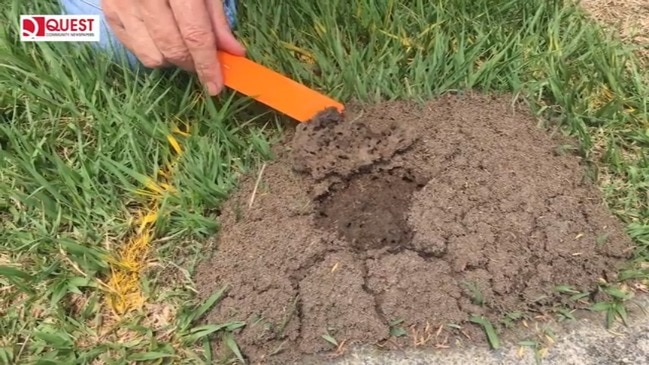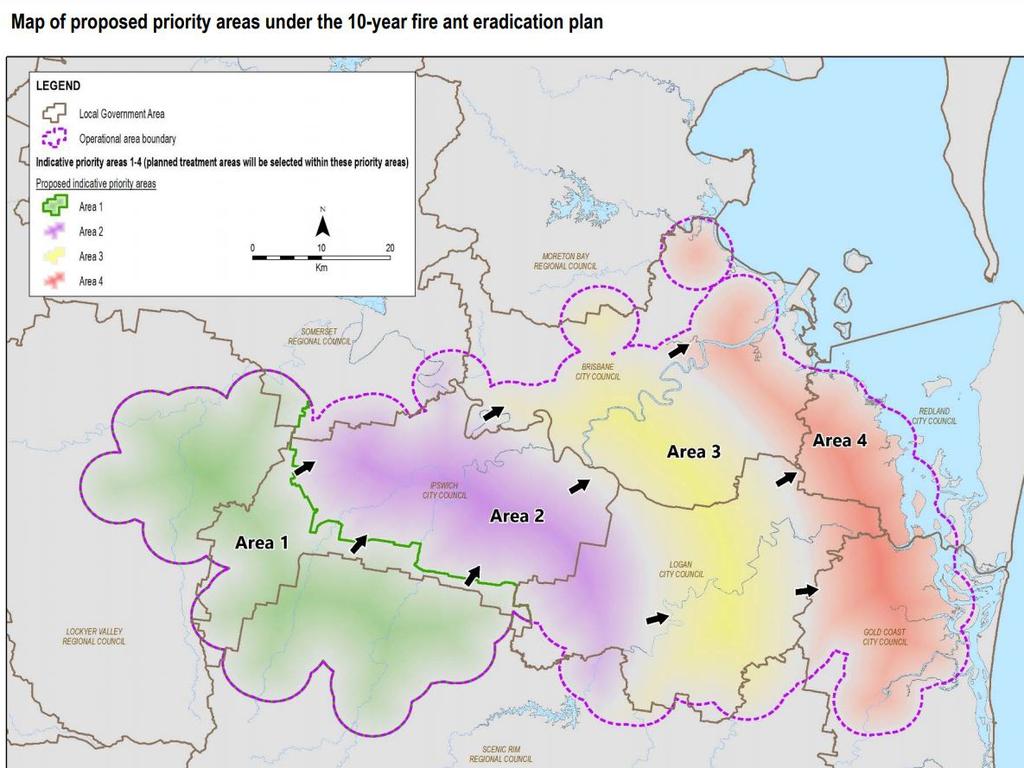Biosecurity officers respond to fire ants outbreak detected in Toowoomba
For the past 22 years, this destructive and painful pest was contained to southeast Queensland, but thanks to human error they have now crossed the Toowoomba Range.

Community News
Don't miss out on the headlines from Community News. Followed categories will be added to My News.
Biosecurity officers are working to contain an outbreak of fire ants after the invasive pest was found at Kleinton at the weekend.
A member of the public discovered a suspect nest on their property at Kleinton and reported it to the National Fire Ant Eradication Program.
Authorities then inspected more than 180 properties in the surrounding area and found one additional nest on a nearby property.
Agriculture Minister Mark Furner said both nests had been destroyed.
“Eradicating fire ants requires a whole-of-community approach,” he said.
“This means community, business, industry and all levels of government working together to protect Australia from this invasive pest.”
The eradication program took samples of the ants for testing and will continue to monitor nearby properties in case the pests reappear.
Toowoomba North MP Trevor Watts said the outbreak was evidence that more effort was needed to control the ants’ spread.
“This is going to be a massive economic cost to Queensland because this minister has let these ants get out of control, and now they are in our own backyard,” he said.

Fire ants are destructive, invasive pests that were first detected in Brisbane in 2001.
While their bite inflicts a painful, fire-like sting, instances of severe acute allergic reaction are limited in humans.
But they can cause death in livestock, and the ants are known to force out native ant species and reduce biodiversity.
The states, along with the federal government, introduced the eradication program to halt their spread, and until the weekend the ants had been contained to Southeast Queensland.
As recently as October 2022, the program was offering free baits for landholders in the Lockyer Valley and Ipswich area.
Fire ants are copper brown in colour and have a darker abdomen. They measure 2–6mm in length with a variety of sizes found in each nest. Fire ant nests appear as mounds or patches of loose soil and have no obvious entry or exit holes.
As part of the eradication program, there was also extra regulation put in place around transporting soil, mulch, manure, quarry product and potted plants from Southeast Queensland to other parts of the state.
It is understood the Kleinton outbreak is a result of a breach in these protocols.
“It is an absolute disgrace that this has got out of the initial cordon that was put in the Lockyer Valley,” Mr Watts said.









